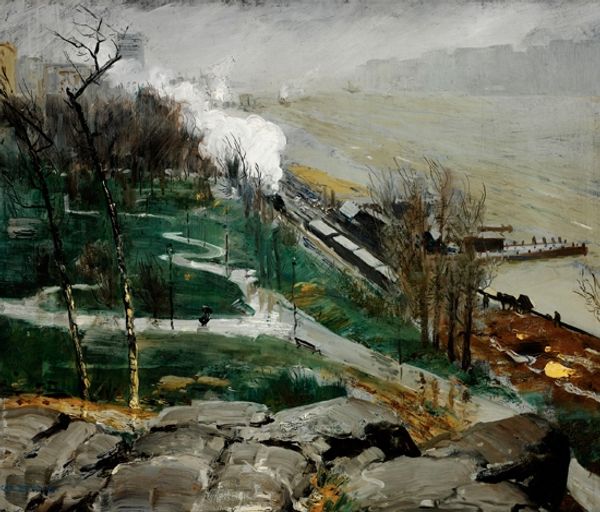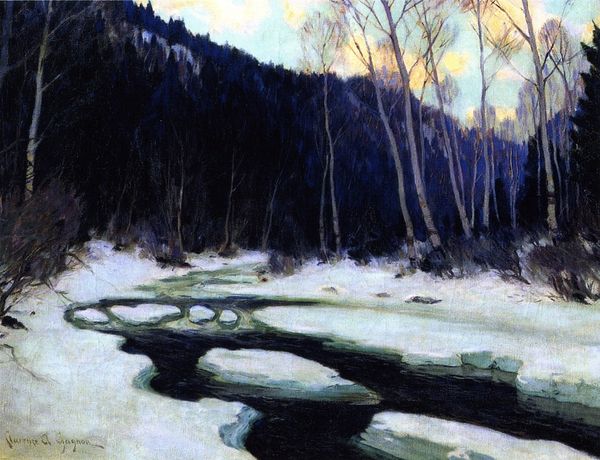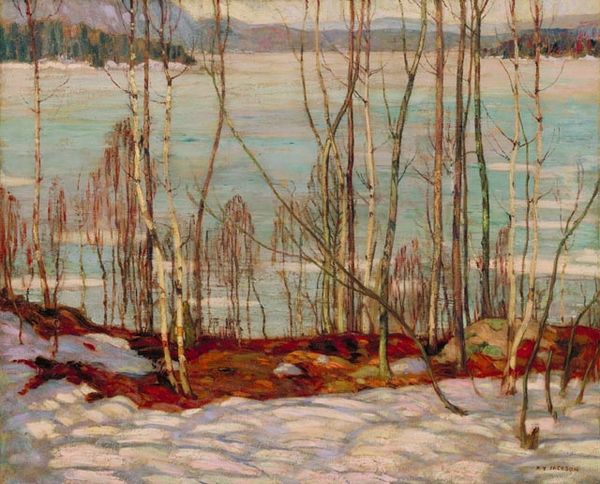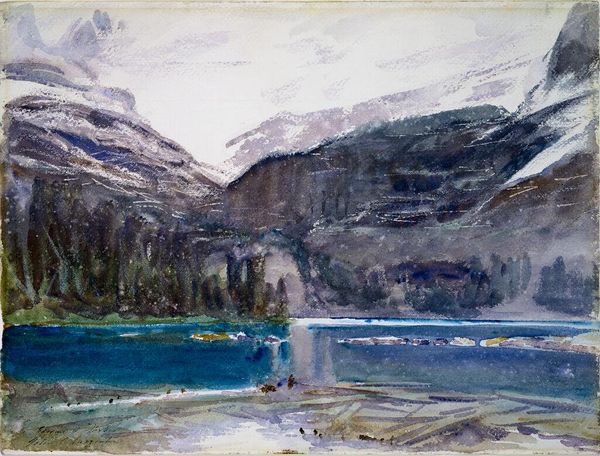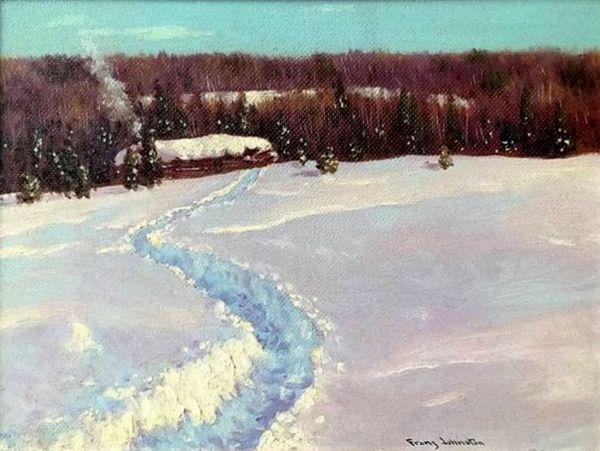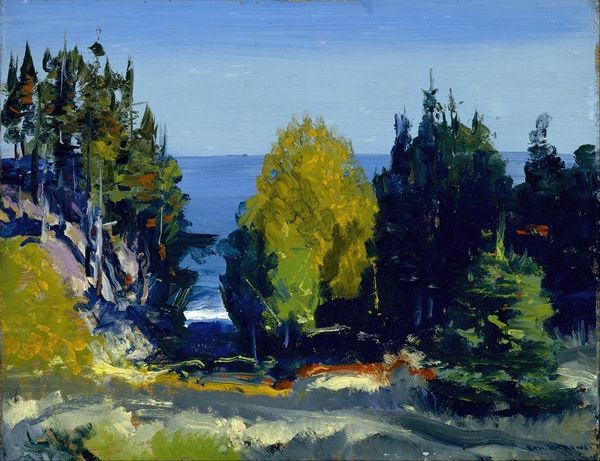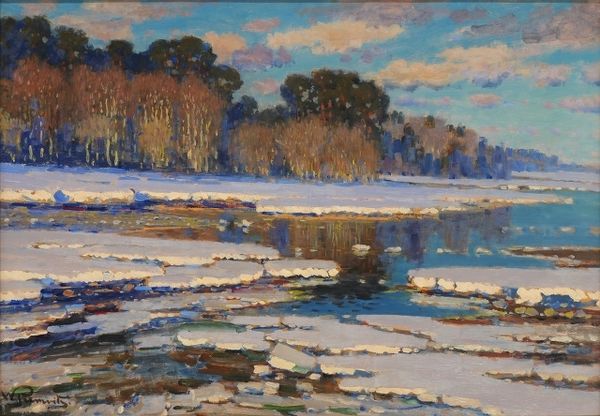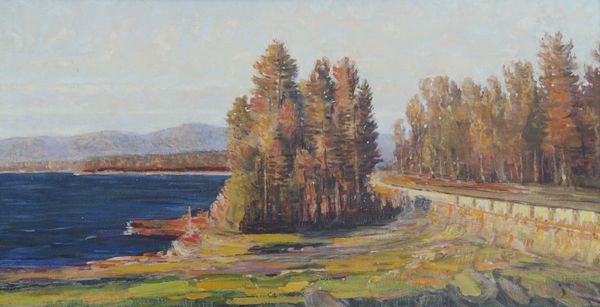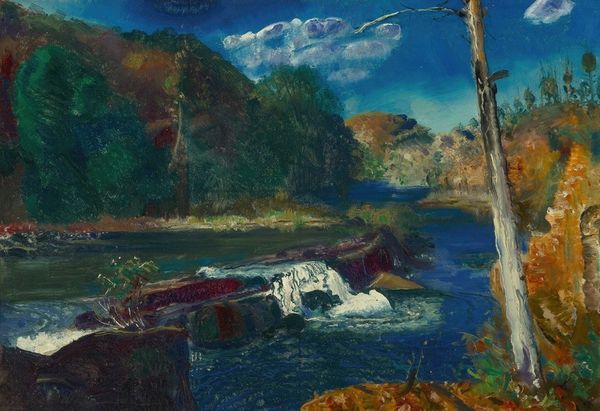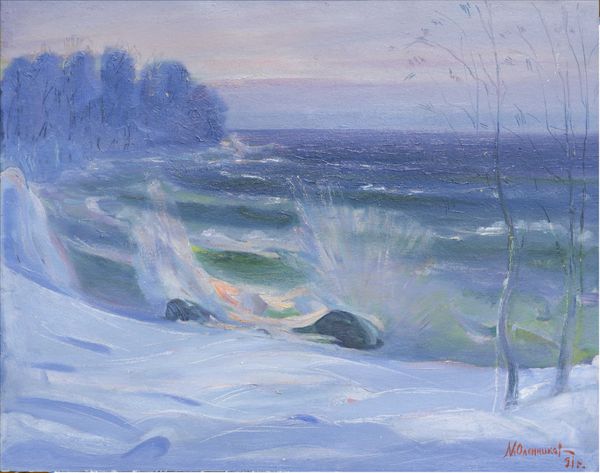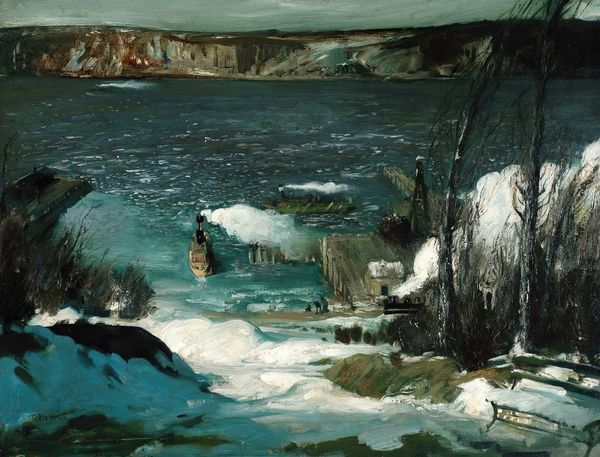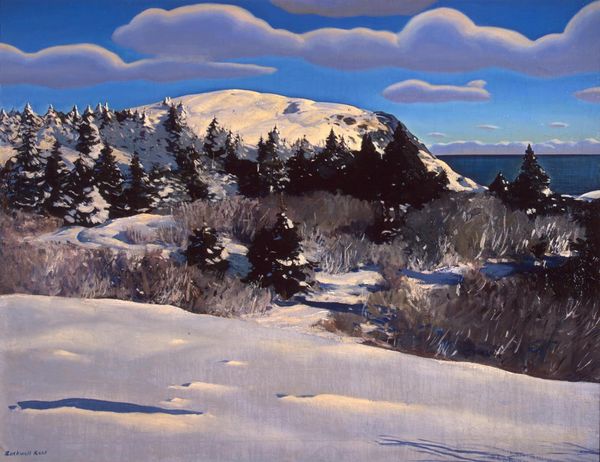
painting, oil-paint
#
painting
#
oil-paint
#
landscape
#
oil painting
#
geometric
#
expressionism
#
expressionist
Copyright: Public Domain: Artvee
Editor: This is "The Palisades," an oil painting by George Wesley Bellows from 1909. There's almost a raw quality to it, and the cool colors make it feel cold and stark. What compositional elements stand out to you? Curator: The painting's impact relies less on representation and more on its assertive materiality. Notice how Bellows uses the impasto technique, applying thick layers of paint to create texture and dimension. This deliberate construction of the picture plane disrupts any illusion of depth. The painting itself becomes the subject, its formal qualities paramount. Editor: So, you are drawn more to the physical qualities of the paint rather than, say, the landscape itself? Curator: Precisely. Observe the deliberate brushstrokes, each a distinct mark contributing to the overall structure. Color is also key. The muted palette of blues, whites, and browns, while evocative of winter, functions primarily to define the forms and relationships within the composition. What do you notice about the perspective here? Editor: Well, it seems slightly skewed, with the foreground almost tilting upwards, drawing our eye across the surface. It almost feels… unnatural. Curator: Exactly! Bellows prioritizes the dynamism of the composition. The tilting perspective, the abrupt shifts in scale, the very deliberate paint application—these all function to disrupt any easy reading of the landscape and bring us back to the painted surface itself. This emphasis invites us to analyze the formal qualities—line, color, texture—before any narrative. Editor: That makes sense. So it’s not necessarily about capturing the *feeling* of a landscape but creating something new through paint and form? Curator: Precisely. Bellows's painting challenges our expectations of landscape art and invites us to appreciate the sheer materiality and formal ingenuity on display. Editor: That's fascinating; I hadn't considered it that way. It really does make you focus on how the paint itself constructs the scene, rather than just representing it. Curator: Indeed, focusing on the formal properties changes our appreciation entirely.
Comments
No comments
Be the first to comment and join the conversation on the ultimate creative platform.
